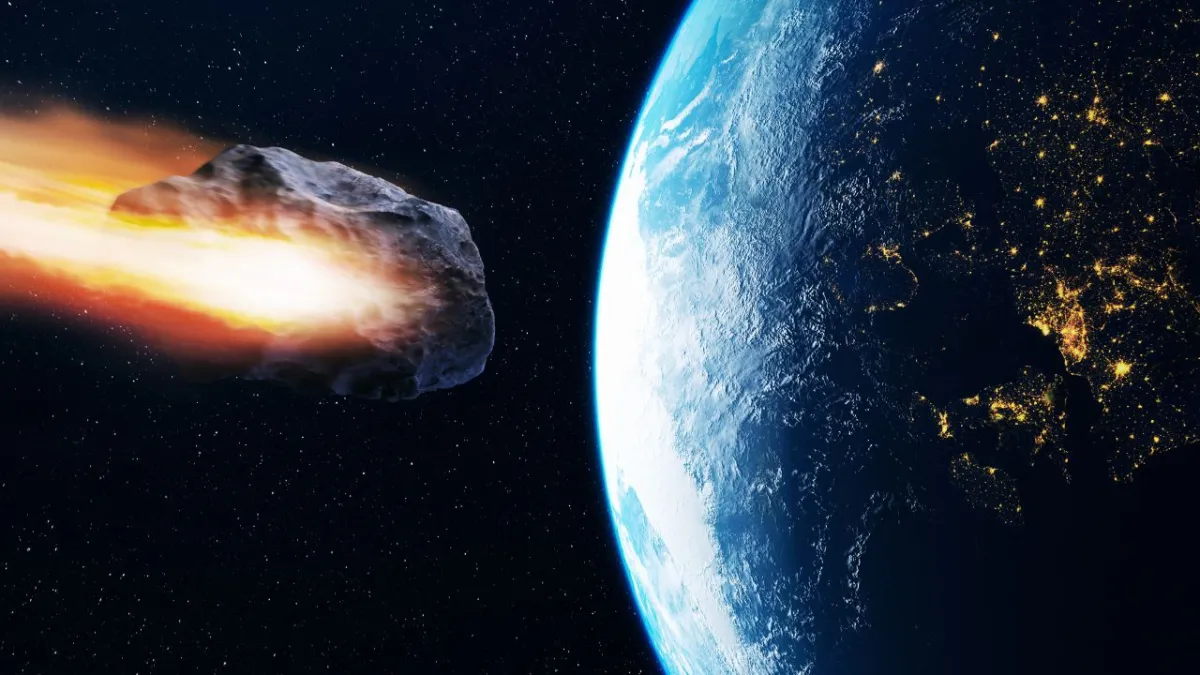
An asteroid is a rocky, metallic celestial body that orbits the Sun. They are smaller than planets and are mainly found in the asteroid belt, located between the orbits of Mars and Jupiter. They are composed primarily of metals and rocks, including materials such as clay, silicates, and metals such as nickel and iron. Asteroids are believed to be remnants of the primitive solar nebula, the material that did not form planets during the formation of the solar system.
Asteroids are of great interest to science because they can provide information about the formation and evolution of the solar system. In addition, some that are in close proximity to Earth are monitored due to their potential impact risk, although the probabilities of collision are generally low, as reported by National Geographic.
By monitoring and studying near-Earth asteroids, scientists can assess the risks and plan possible missions to deflect asteroids that could pose a threat. These have irregular and jagged shapes, unlike planets, which are usually spherical.
Freepik
>>> You can read: The exact place where the asteroid that extinct the dinosaurs fell: it is in America
Asteroid “God of Chaos” will pass near Earth
In 2029, a huge asteroid known as Apophis or “God of Chaos”, about 335 meters in diameter, will pass near Earth, an event that has sparked the interest and concern of the scientific community. This asteroid, named after the Egyptian god of chaos, was first identified in 2004, and has been the subject of constant observation ever since. Although the risks of a collision with Earth have been ruled out, experts continue to monitor its trajectory. and studying the effects that its proximity could have on its structure.
When Apophis was discovered, initial calculations indicated that the asteroid could pose a threat to Earth, with a possible collision in 2029. However, after years of observations and more precise calculations, astronomers managed to rule out this possibility. Although the probability of impact in 2029 was eliminated, Until 2021 there was a small chance that Apophis could crash into Earth in 2068. However, more recent NASA research has confirmed that this risk is no longer a concern.
“An impact in 2068 is no longer a possibility and our calculations do not show any risk of impact for at least the next 100 years,” said Davide Farnocchia, a NASA expert.

Nasa
There would be an asteroid earthquake in 2029
Although the risk of collision has faded, the close pass of Apophis in 2029 will not be without consequences, especially for the asteroid itself. Scientists warn that, due to Earth’s intense gravitational pull, Apophis could experience what are known as “asteroid earthquakes.” This phenomenon occurs when the gravity of a nearby planet alters the rotation state and internal structure of an asteroid. In the case of Apophis, these vibrations are expected to begin about an hour before its closest point to Earth and continue briefly after its departure.
Researcher Ronald-Louis Ballouz, from the Applied Physics Laboratory at Johns Hopkins University, explained that these vibrations could cause fragments to detach from the surface of the asteroid, which would alter its appearance. The “God of Chaos” is an S-type asteroid, which means that its composition is dominated by rocky materials, with a mixture of metals such as nickel and iron.
This rocky-metallic nature makes it a relatively dense object, but vulnerable to alterations in its structure when it passes near a massive body like the Earth. Additionally, Apophis is thought to have an elongated shape and could be composed of two lobes, giving it a peanut-like appearance, a common feature in many near-Earth asteroids.

Nasa
In 2029 the asteroid will not impact Earth, but it will be close
On April 13, 2029, according to NASA, Apophis will approach Earth at a distance of just 31,860 kilometers, much closer than many geostationary satellites. This approach will be one of the closest on record for an asteroid of this size, allowing astronomers to study the object in unprecedented detail. During that day, Apophis will be visible to the naked eye from many regions of the Eastern Hemisphere, making it an exceptional astronomical spectacle.
Apophis will continue to be an object of interest to astronomers for years to come. NASA and other space agencies will continue to monitor its trajectory to ensure that any possible changes in its orbit are detected in time. In fact, the passage of Apophis in 2029 will mark a unique opportunity to study a near-Earth asteroid and better understand the effects of the gravitational interaction between an asteroid and our planet.
The OSIRIS-APEX mission will be key. The “God of Chaos” you are referring to is the asteroid 99942 Apophis, known by its name in reference to the Egyptian god of chaos and destruction.aliosa not only on itself, but also on other near-Earth objects that could, in the future, have similar trajectories.
>>> You may be interested in: Video of the exact moment when an asteroid hits the Earth’s atmosphere
Source: https://www.noticiascaracol.com/mundo/asteroide-dios-del-caos-caera-en-la-tierra-en-2029-esto-dicen-expertos-de-la-nasa-so35


